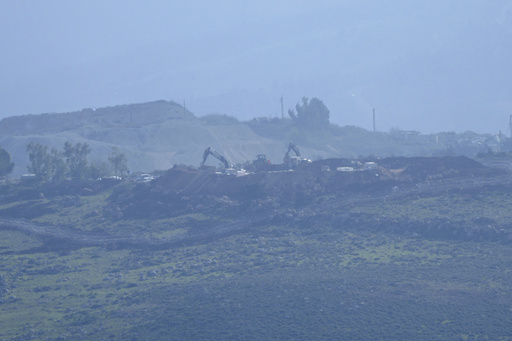KHIAM, Lebanon — Every morning, Sabah Abdullah returns to her ravaged hometown of Khiam, sitting beside her destroyed house as she awaits assistance from Hezbollah’s construction division. The 66-year-old woman, now residing in Kawkaba due to losing her home in the Israel-Hezbollah conflict, seeks compensation for her losses following the prolonged war which left her without shelter.
Abdullah, a grocery store owner, endured significant damage to her store during the 13-month conflict that concluded in late November after a ceasefire brokered by the U.S. The conflict resulted in the deaths of over 4,000 individuals and over 16,000 injured in Lebanon, causing economic repercussions amounting to billions of dollars. “Material loss can be addressed, but the loss of loved ones is irreplaceable,” Abdullah lamented as she rested on a plastic chair outside her shop under the sun.
Israeli troops are expected to maintain a presence in parts of southern Lebanon despite a 60-day ceasefire slated to end on January 27, during which an Israeli withdrawal and a cessation of Hezbollah’s military presence was promised. An Israeli representative informed the public that forces would remain stationed at five critical sites after the ceasefire expiration. One such area is the strategic Hamamis hill located on the outskirts of Khiam, where construction equipment was recently observed taking measures to establish protective structures, suggesting that the Israeli military intends to sustain its foothold beyond the anticipated deadline.
Hezbollah’s leader Naim Kassem firmly asserted in a recent speech that Israel must fully evacuate from Lebanon, insisting that there are no acceptable justifications for their continued presence. He stressed that the Lebanese government bears the responsibility of enforcing the ceasefire agreement by preventing any Israeli occupation after the set date.
The current conflict, which escalated shortly following a deadly assault by Hamas in southern Israel on October 7, 2023, led to the deaths of 1,200 people and resulted in the abduction of around 250 individuals. The hostilities between Israel and Hezbollah intensified further from September 23, marked by Israel’s increased offensive operations which included the elimination of significant Hezbollah leadership figures, such as Hassan Nasrallah.
Khiam has endured considerable devastation, with large sectors of the town reduced to rubble and remnants of graffiti from Israeli troops visible on various structures and within homes. The local cemetery also suffered extensive damage, with many graves disturbed by the conflict. Daily efforts to clear debris are ongoing, allowing residents to briefly visit their properties—even in the absence of electricity or running water. State-run utilities are working on addressing the infrastructure damage by erecting new utility poles.
“In Khiam, everyone was martyred,” states graffiti on one wall, while another remarks that “Khiam is Golani’s graveyard,” referencing the Israeli Golani Brigade. In a nearby building, a resident showed a journalist a Star of David painted in red at her apartment entrance, expressing concern for her safety as she detailed the destruction throughout her living space.
Abdullah recalls returning to her business in Khiam shortly after the ceasefire was implemented, only to find her shop invaded by famished animals devouring products left behind, including cakes and chocolates. The aftermath of the conflict revealed a significant breach in her shop’s metal door, which was blown open. While witnessing her childhood home—a construction of her late father— lay in ruins was distressing, she found solace in the fact that her family had not suffered physical harm during the war.
Shortly after the violence subsided, Abdullah received $12,000 from Hezbollah’s construction arm, Jihad al-Binaa, which included $8,000 for her lost belongings and $4,000 designated for a year’s rent. Since the beginning of the hostilities, she has found temporary housing in Marakaba, depleting most of her savings and resorting to selling jewelry. Now, she awaits a visit from government assessors to estimate the losses incurred in her two-story home that she shared with her brother, with intentions to rebuild. However, she remains apprehensive about the future, saying, “I will restore my home, yet the future remains uncertain as we live so close to the border.”
Another resident of Khiam, Dalal Abdallah, expressed that if Israel decides to maintain its presence in Lebanon, it will ultimately have to evacuate once more. “The land has exchanged invaluable blood and lives,” she remarked, emphasizing that “no one should presume we will abandon our heritage.”
